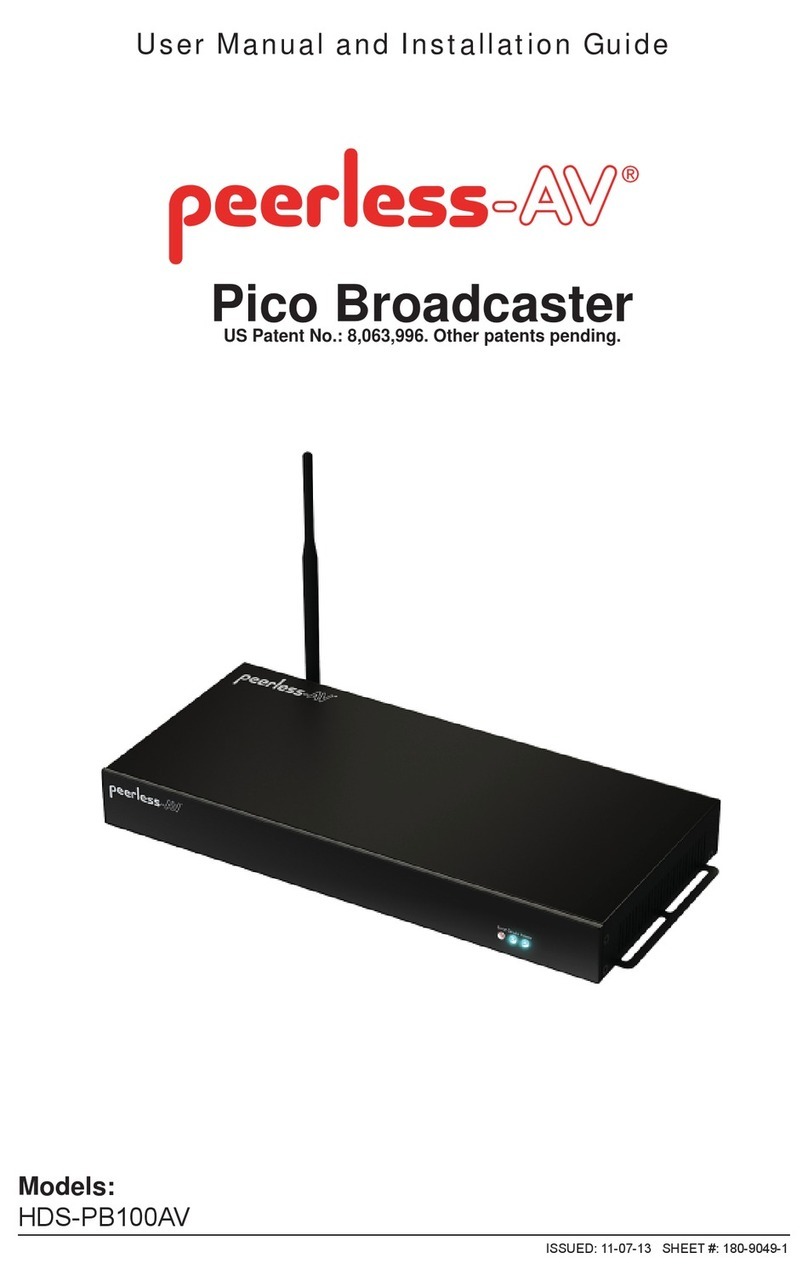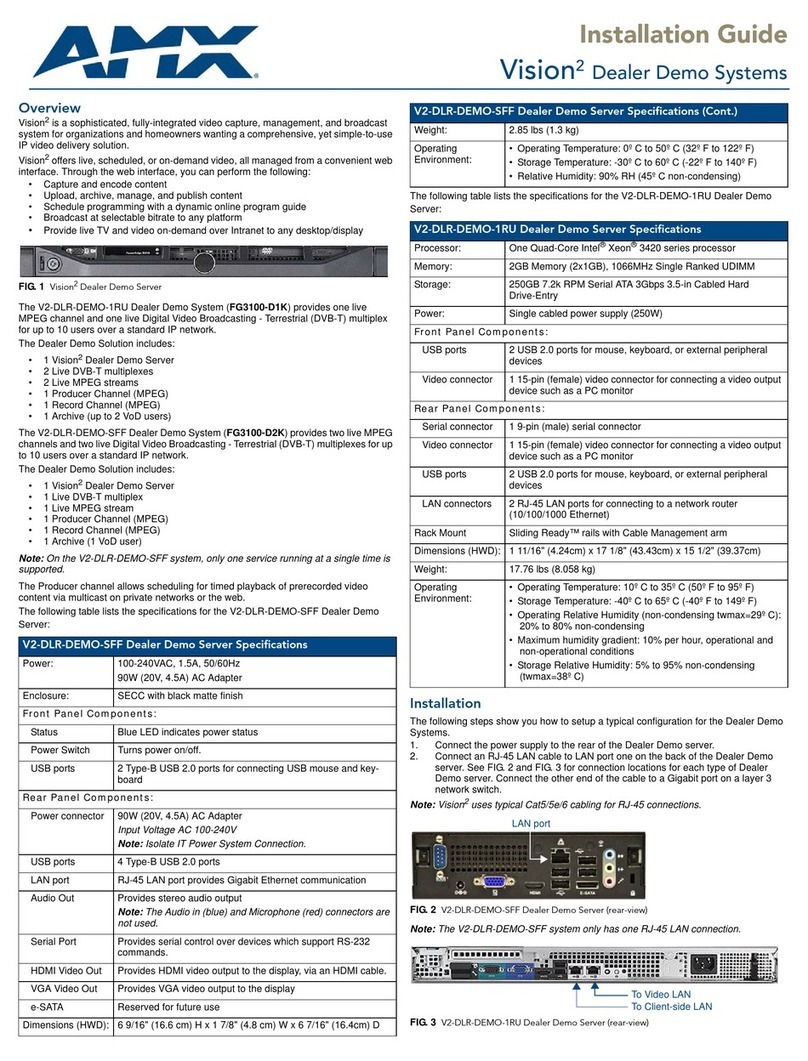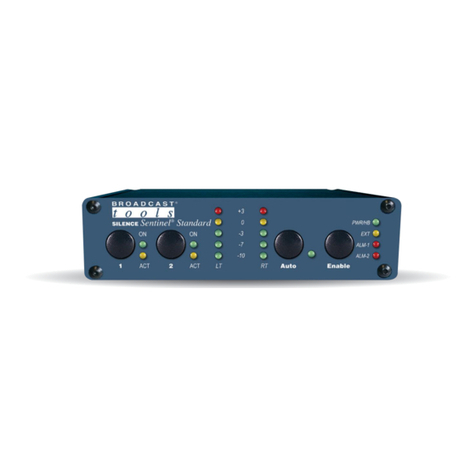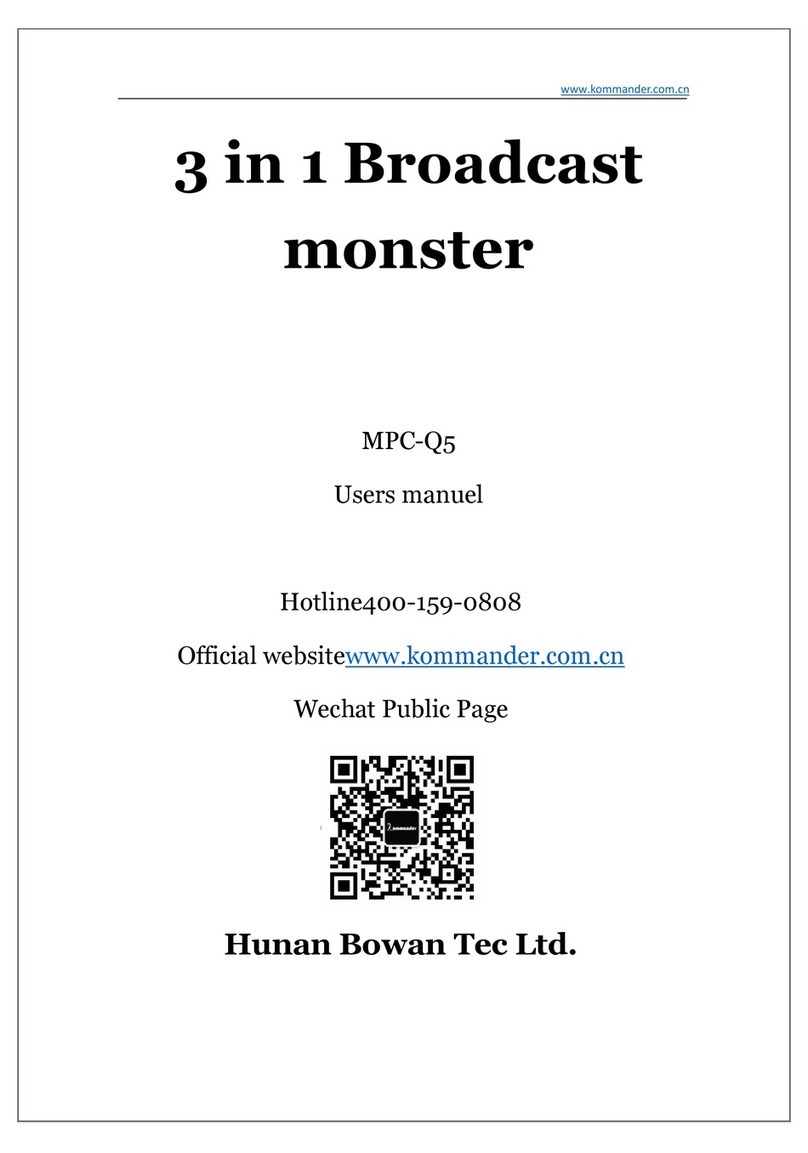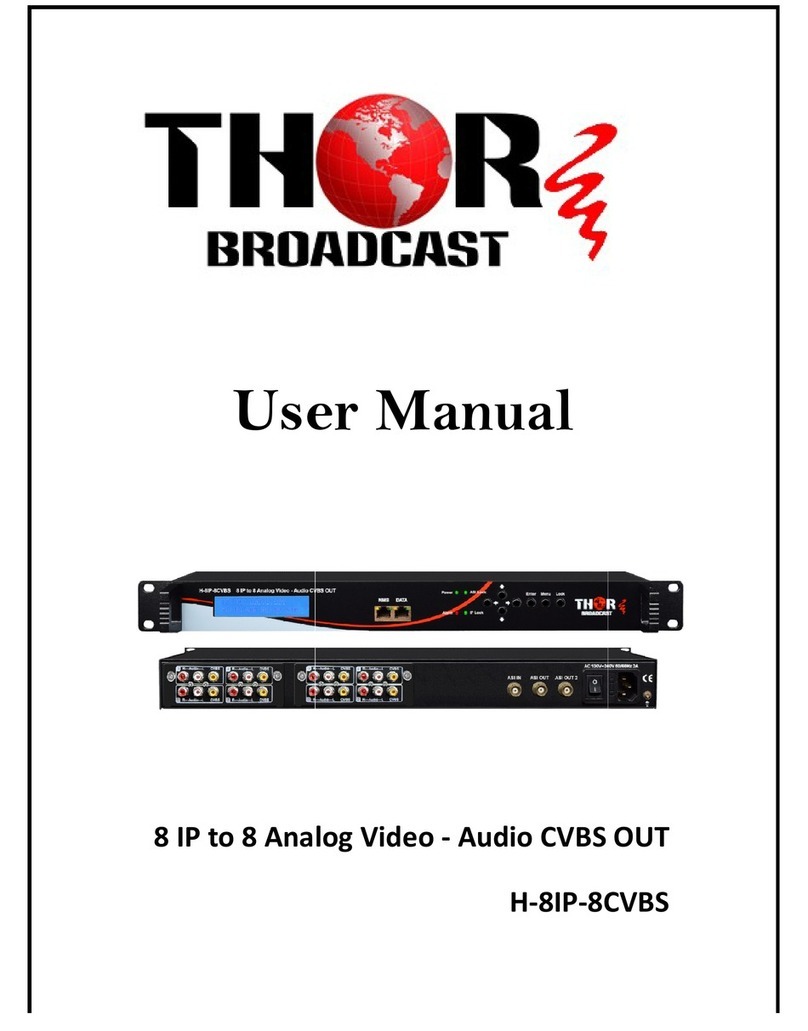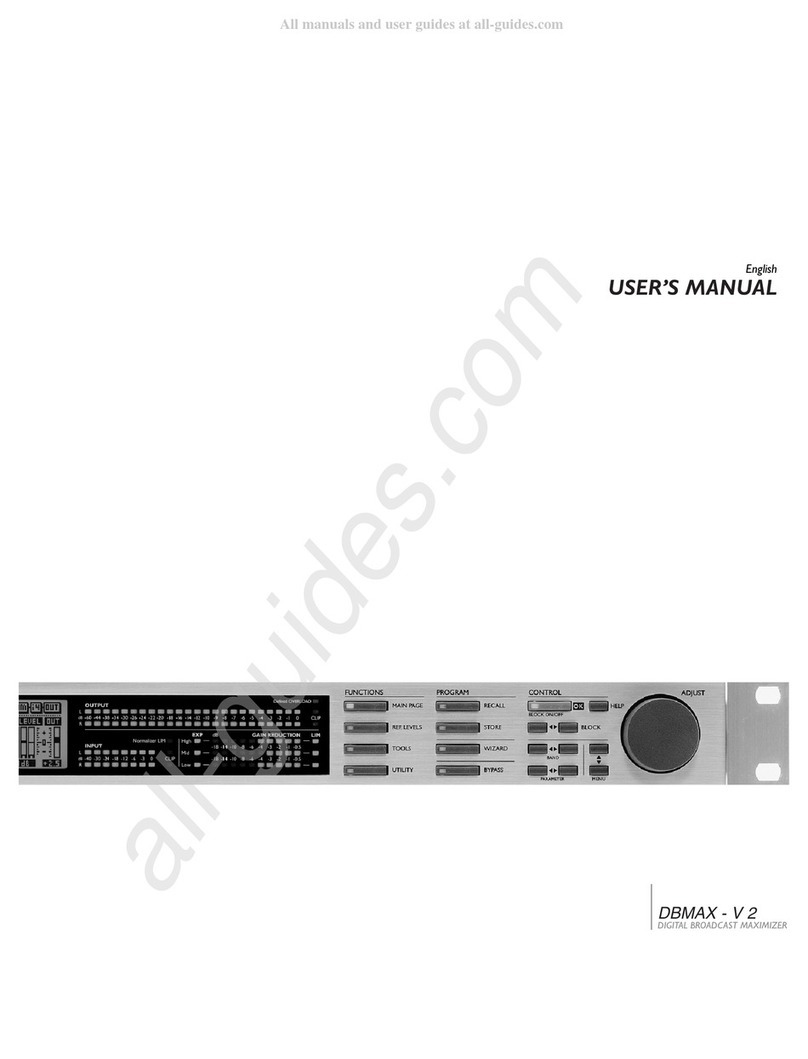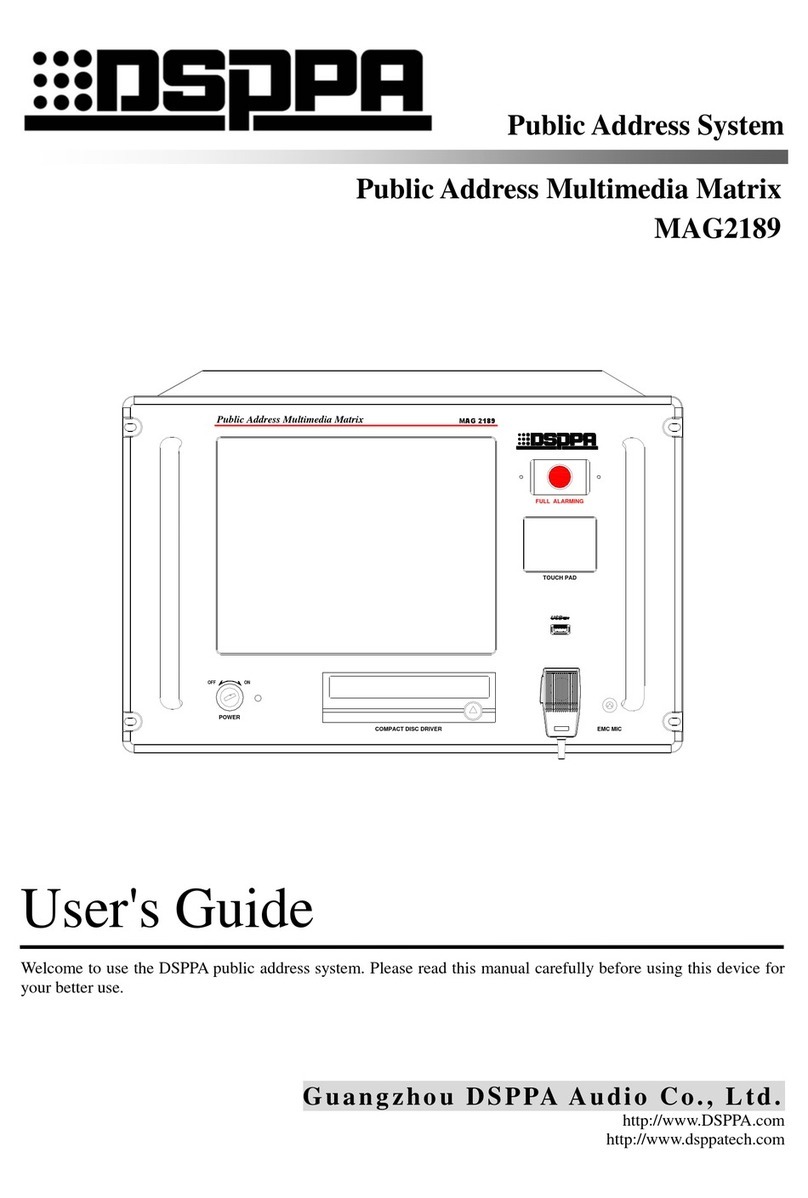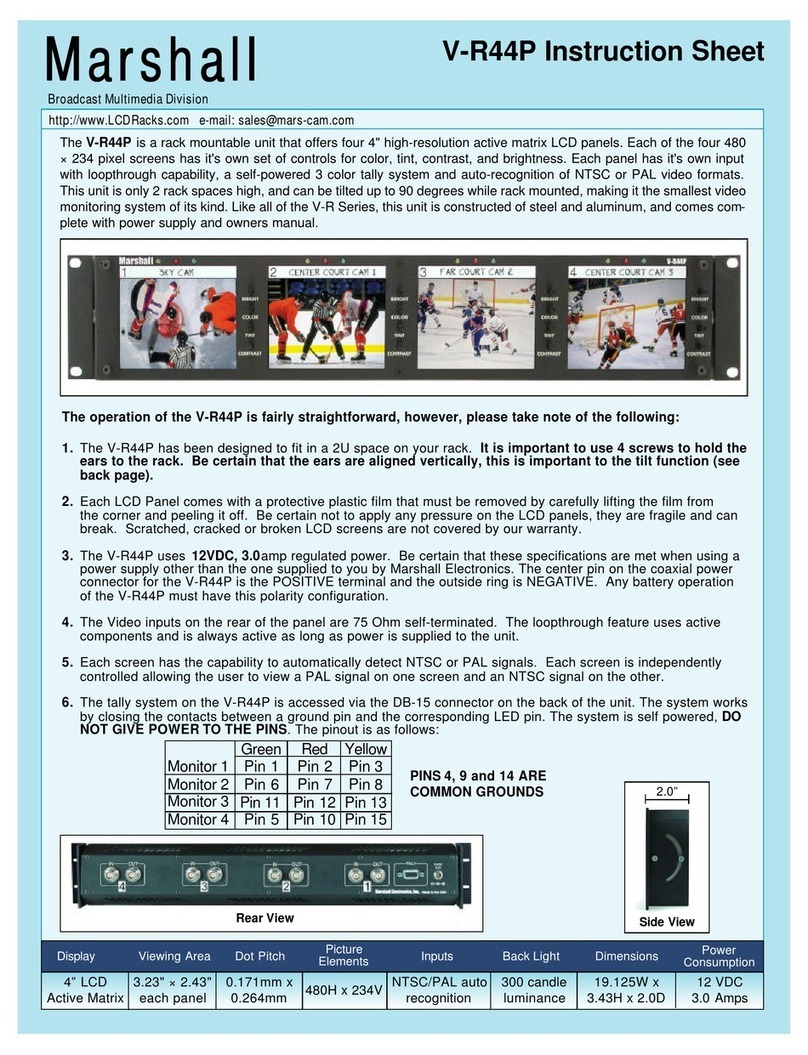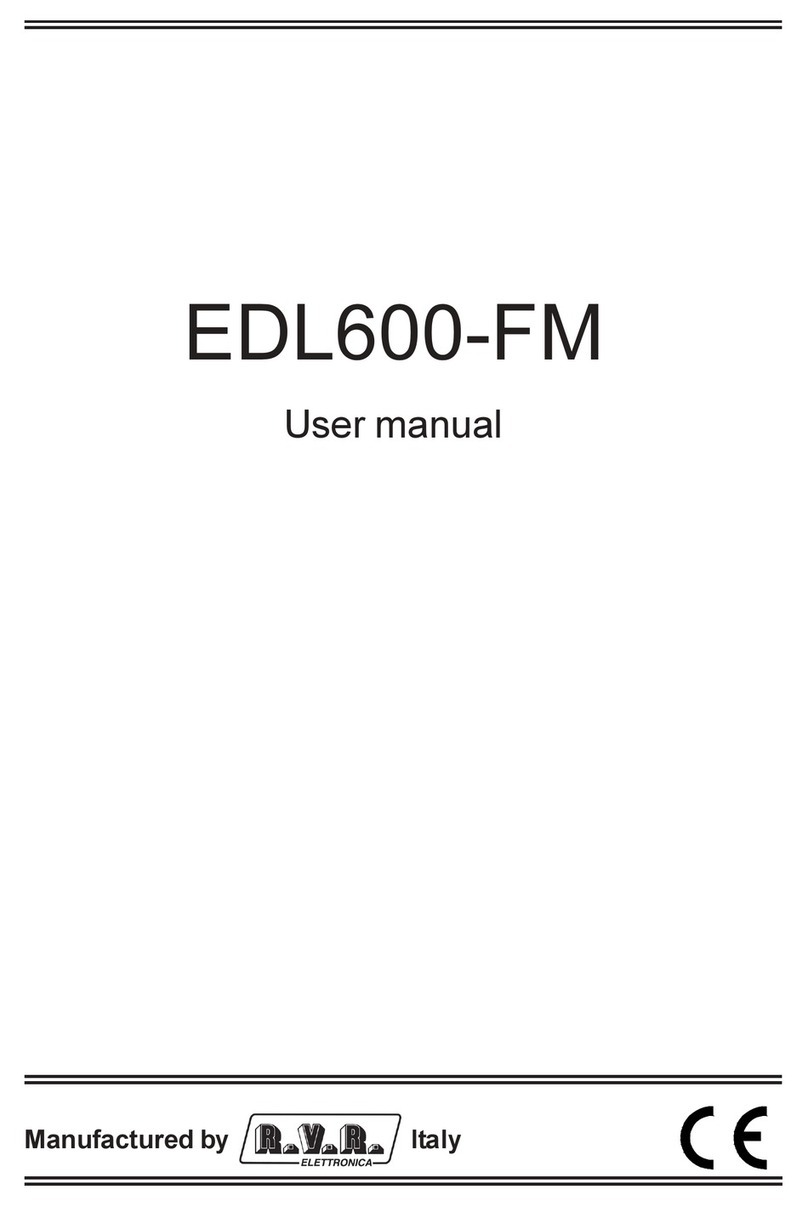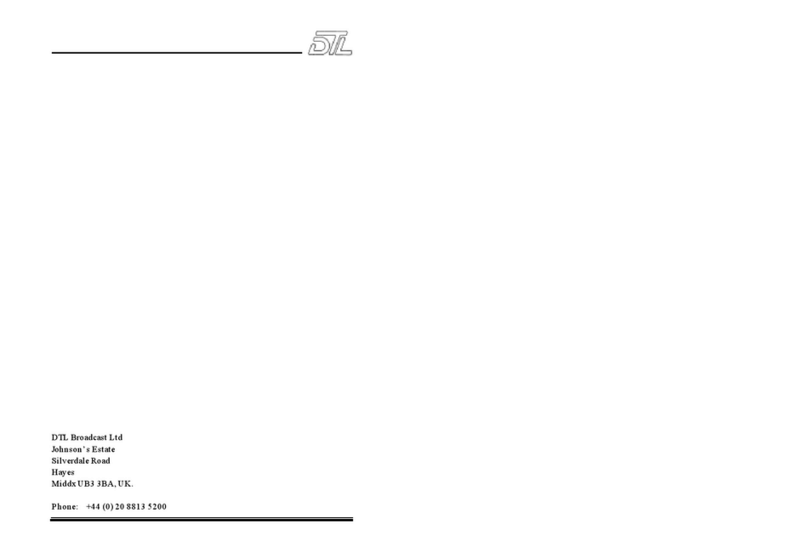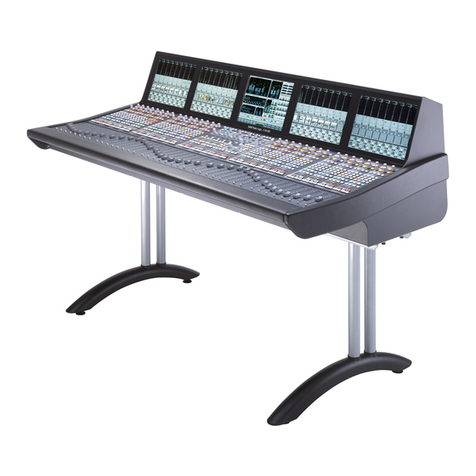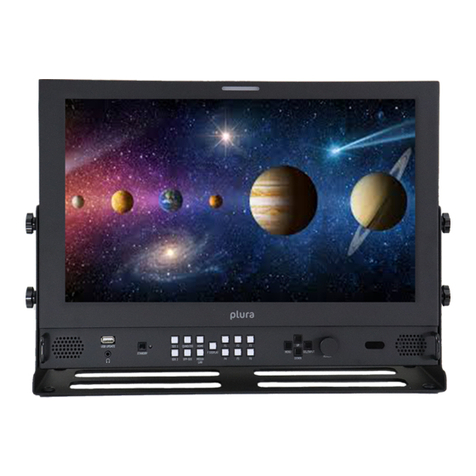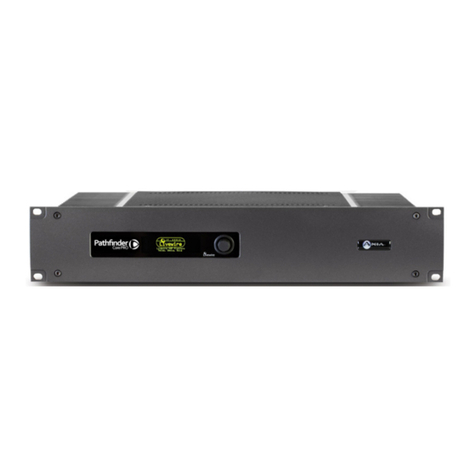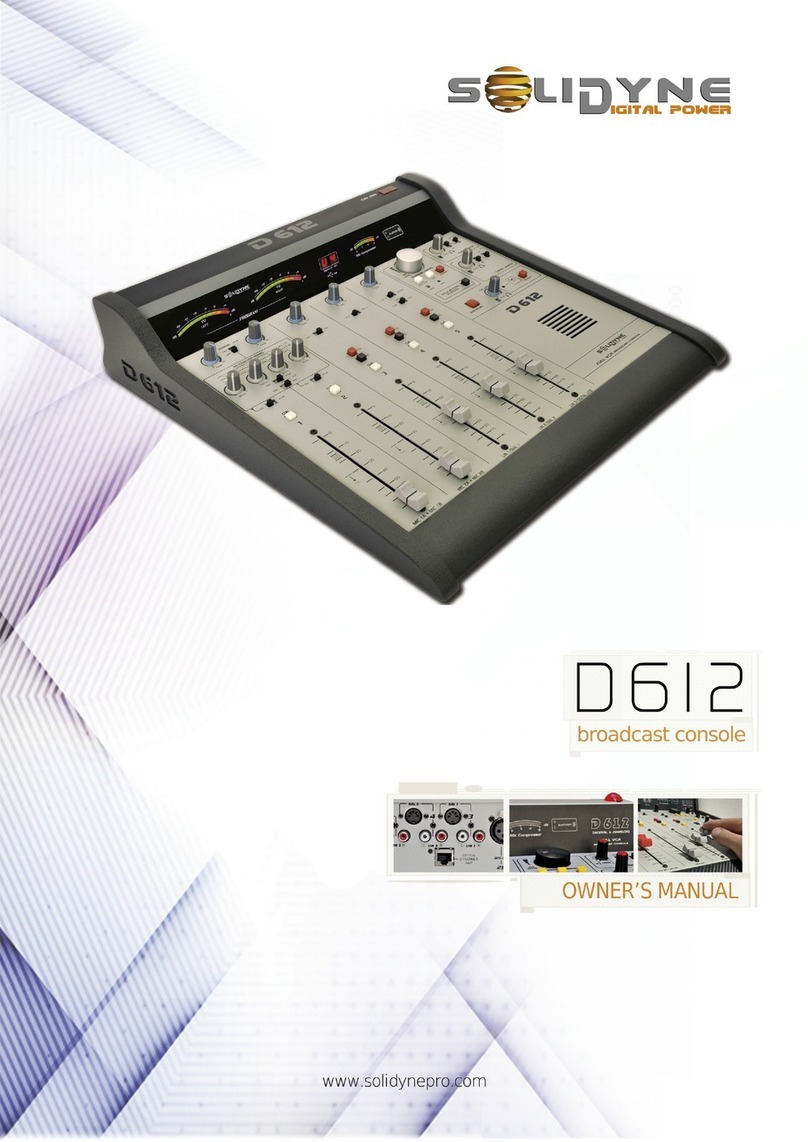
SERIE CMDS
2
1.2 ALIMENTAZIONE
Questo apparecchio è predisposto per il
funzionamento con tensione di rete a 230 V ±
10% 50/60 Hz. È possibile utilizzare
lapparecchio anche con una tensione di rete di
115 V ± 10% 50/60 Hz; a tal scopo è necessario
portare il selettore [14] in posizione 115 V.
Il sistema compatto PA312 può anche essere
alimentato con una sorgente esterna di corrente
continua con tensione di 24 V che deve essere
applicata, rispettando le polarità, ai relativi
terminali della morsettiera [26]. In accordo con
le normative di sicurezza, linterruttore di
accensione [11] agisce solo sulla tensione di
rete.
In dotazione allapparecchio é fornito un cavo
di alimentazione con filo di terra; il terminale di
terra della spina di rete non deve essere rimosso
in alcun caso.
Collegare la spina di rete [19] dellapparecchio
alla rete elettrica utilizzando lapposito cavo
fornito in dotazione; assicurarsi che la presa di
corrente sia dotata di collegamento di terra a
norma di legge.
Il circuito di alimentazione del sistema compatto
PA312 è protetto da un fusibile posto allinterno
dellapparecchio.
1.1 INSTALLAZIONE
Tutti gli apparecchi PASO sono costruiti nel
rispetto delle più severe normative internazionali
di sicurezza ed in ottemperanza ai requisiti della
Comunità Europea. Per un corretto ed efficace
uso dellapparecchio è importante prendere
conoscenza di tutte le caratteristiche leggendo
attentamente le presenti istruzioni ed in
particolare le note di sicurezza.
Durante il funzionamento dellapparecchio è
necessario assicurare unadeguata ventilazione.
Evitare di racchiudere lapparecchio in un mobile
privo di aerazione o di ostruire le fessure di
ventilazione appoggiando oggetti od accessori
sulla parte superiore.
Evitare inoltre di tenere lapparecchio in
prossimità di sorgenti di calore.
1.3 NOTE DI SICUREZZA
Ogni intervento allinterno dellapparecchio,
quale la selezione di alcuni modi duso o la
sostituzione di fusibili, deve essere effettuato
solo da personale specializzato: la rimozione
del coperchio rende accessibili parti con rischio
di scosse elettriche.
Prima di rimuovere il coperchio accertarsi
sempre che il cavo di rete sia staccato.
Nel caso di accidentale caduta di liquidi
sullapparecchio, staccare immediatamente la
spina di rete ed interpellare il centro di
assistenza PASO più vicino.
La connessione di telaio [20] consente di
collegare altre apparecchiature per la sola
funzione di schermatura dei segnali a basso
livello: questa presa non deve essere utilizzata
per il collegamento di sicurezza del telaio alla
terra.
1.1 INSTALLATION
All PASO equipment is manufactured in
accordance with the most stringent international
safety standards and in compliance with
European Community requisites.
In order to use the equipment correctly and
effectively, it is important to be aware of all its
characteristics by reading these instructions and
in particular the safety notes carefully.
While the equipment is working, it is necessary
to provide adequate ventilation.
The equipment must not be closed inside
cabinets without ventilation or kept in the
vicinity of sources of heat.
1.3 SAFETY NOTES
Any activities inside the apparatus, such as
selecting some of the operating modes, the
installation of accessories or the replacement
of fuses, must be carried out by specialized
personnel only: when the cover is removed,
parts liable to cause electric shocks are
exposed. Before removing the cover, always
make sure that the power cord has been
disconnected.
In the event that liquid is accidentally spilt onto
the apparatus, disconnect the mains plug
immediately and contact the nearest PASO
Service Centre.
The chassis connection [20] may be used to
connect other equipment only for the purpose
of shielding the low signals: this socket may
not be used to connect the chassis to earth
for safety purposes.
1.1 INSTALLATION
Tous les appareils PASO sont réalisés dans le
respect des normes internationales de sécurité
les plus sévères et conformément à tous les
standards de l'Union européenne.
Pour garantir le bon fonctionnement de
l'appareil, il est important de prendre
connaissance de toutes ses caractéristiques,
en lisant à cet effet les présentes instructions
en accordant une attention toute particulière
aux notes de sécurité.
Durant le fonctionnement de l'appareil, il est
nécessaire de garantir une bonne ventilation et
il est important d'éviter de placer l'appareil dans
un meuble dépourvu d'aération ou encore de le
placer à proximité de sources de chaleur.
1.3 CONSEILS DE SECURITE
Toute intervention à lintérieur de lappareil,
comme la sélection de certains modes demploi,
lapplication daccessoires ou la substitution de
fusibles, doit être exclusivement effectuée par
un personnel expert: le retrait du couvercle
rend accessibles certaines parties présentant
des risques délectrocution. Avant denlever le
couvercle, contrôler toujours que le cordon
dalimentation est débranché.
En cas de chute accidentelle de liquides
sur lappareil, débrancher immédiatement la
fiche dalimentation et contacter le centre
dassistance PASO le plus proche. Il est possible
de relier dautres appareils à la connexion de
masse du châssis [20] seulement pour la
fonction de protection des signaux à bas
niveau: cette prise ne doit pas être utilisée
pour la connexion de sécurité du châssis à la
terre.
1.2 POWER SUPPLY
This equipment is designed for use with a mains
voltage of 230 V ± 10% 50/60 Hz. It is also
possible to use the equipment with a mains
voltage of 115 V ± 10% 50/60 Hz, however in
this case it is necessary to position the selector
switch [14] on 115 V.
The PA312 compact system can also be
powered from an external DC power supply with
a voltage of 24 V, that has to be applied with
the correct polarity to the appropriate terminals
on the terminal strip [26].
As required under safety regulations, the
ON/OFF switch [11] only controls the mains
voltage.
The equipment is supplied with its own power-
supply cable, which is equipped with an earthing
wire. The earth terminal of the mains plug should
never be removed under any circumstances.
Connect the mains plug [19] of the equipment
to the power mains using the cable included in
the supply. Make sure that the power outlet is
equipped with a connection to earth in
accordance with the law.
The power-supply circuit of the PA312 compact
system is protected by a fuse installed inside
the equipment.
1.2 ALIMENTATION
L'appareil est prévu pour être alimenté sur
secteur à une tension de 230 V ± 10% 50/60
Hz. Il est également possible de le faire
fonctionner à une tension de 115 V ± 10%
50/60 Hz; pour cela il est nécessaire de placer
le sélecteur [14] sur la position 115 V.
Le système compact PA312 peut également
être alimenté par une source externe en courant
continu à une tension de 24 V appliquée, en
veillant à respecter les polarités, aux bornes
de la plaquette de connexions [26].
Conformément aux normes de sécurité,
l'interrupteur d'allumage [11] est actif
uniquement sur l'alimentation de secteur.
L'appareil est fourni avec un câble d'alimentation
pourvu de conducteur de terre; la terminaison
de terre de la fiche de branchement sur secteur
ne doit en aucun cas être retirée.
Brancher la fiche [19] de l'appareil au secteur
d'alimentation électrique en utilisant le câble
fourni à cet effet et s'assurer que la prise de
secteur est raccordée à la mise à la terre
conformément à la réglementation.
Le circuit d'alimentation du système compact
PA312 est protégé par un fusible installé à
l'intérieur de l'appareil.
1GENERALWARNINGS PRECAUTIONS GENERALESAVVERTENZE GENERALI
11-534_IEF.p65 12/10/01, 14.362
